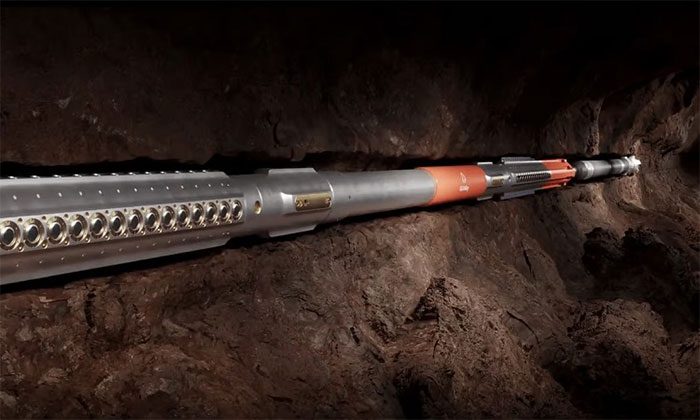Anchorbit and Plasmabit Technologies Promise Faster and Cheaper Drilling of Geothermal Resources at 10km Depths.
Simulation of the Anchorbit system operating underground. (Video: GA Drilling).
GA Drilling has introduced two new technologies that facilitate geothermal energy production anywhere in the world. The heat beneath the Earth’s surface is a reliable, clean energy source available 24/7, capable of generating steam to run turbines or directly supplying central heating systems through pipelines. The temperature and pressure when drilling ultra-deep often destroy even the highest quality drill bits. The process of changing drill bits is time-consuming and costly. Therefore, GA Drilling has developed two key technologies aimed at making geothermal energy more affordable and easily accessible anywhere, as reported by Yahoo News on June 9.
First, the Anchorbit system places two anchor rings behind the drill bit, each equipped with a piston that can extend and latch onto the borehole. When the upper anchor ring operates in this manner, the lower ring moves closer to the drill bit and then pushes the piston out to allow the upper ring to slide down.

These two new technologies help generate geothermal energy anywhere in the world.
These anchor rings stabilize the drill bit, preventing vibrations that occur when operating rotary drilling equipment at depths of several kilometers. They also provide additional weight pressing down on the drill bit. GA reports that the Anchorbit system not only doubles the speed of drilling through hard rock but also extends the lifespan of the drill bit by two times, thereby reducing replacement costs.
Anchorbit accelerates drilling speeds at depths greater than 6km, but GA’s target for geothermal extraction is more than 10km underground. To reach this depth, the company has developed a second key technology, Plasmabit.
The Plasmabit system can be integrated with standard drilling rigs. This is a plasma pulse drilling system that uses a rotating arc torch to explode rocks with ionized gas at 6,000 degrees Celsius, causing the rock layers to crack and weaken, followed by high-pressure water ejected to break down and bring materials to the surface through piping.
Since the drill bit does not make direct contact, this system does not require periodic replacement. According to GA, drilling through hard granite at a depth of 10km is relatively straightforward. Plasmabit can drill deeper and cheaper than conventional rigs.
If GA’s deep drilling achievements can be applied anywhere, this technology will significantly contribute to global electricity production and the race to achieve carbon neutrality by 2050.


















































